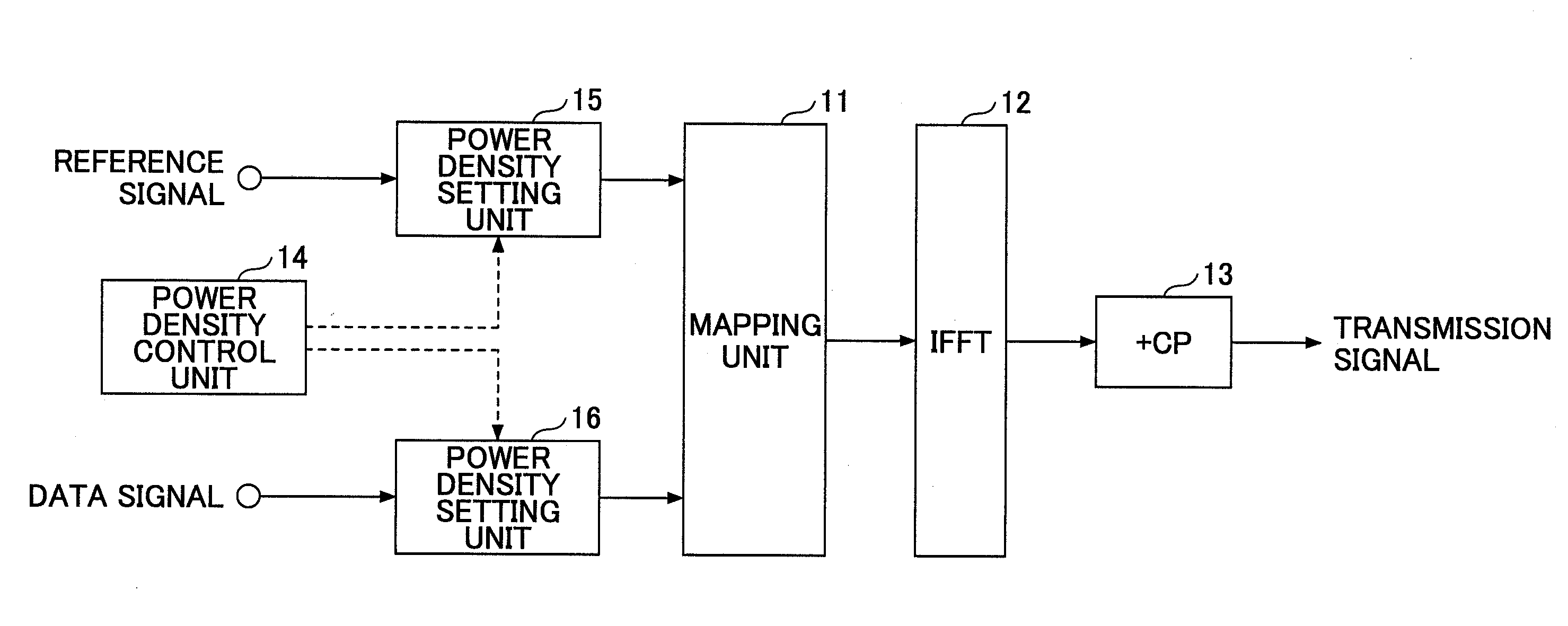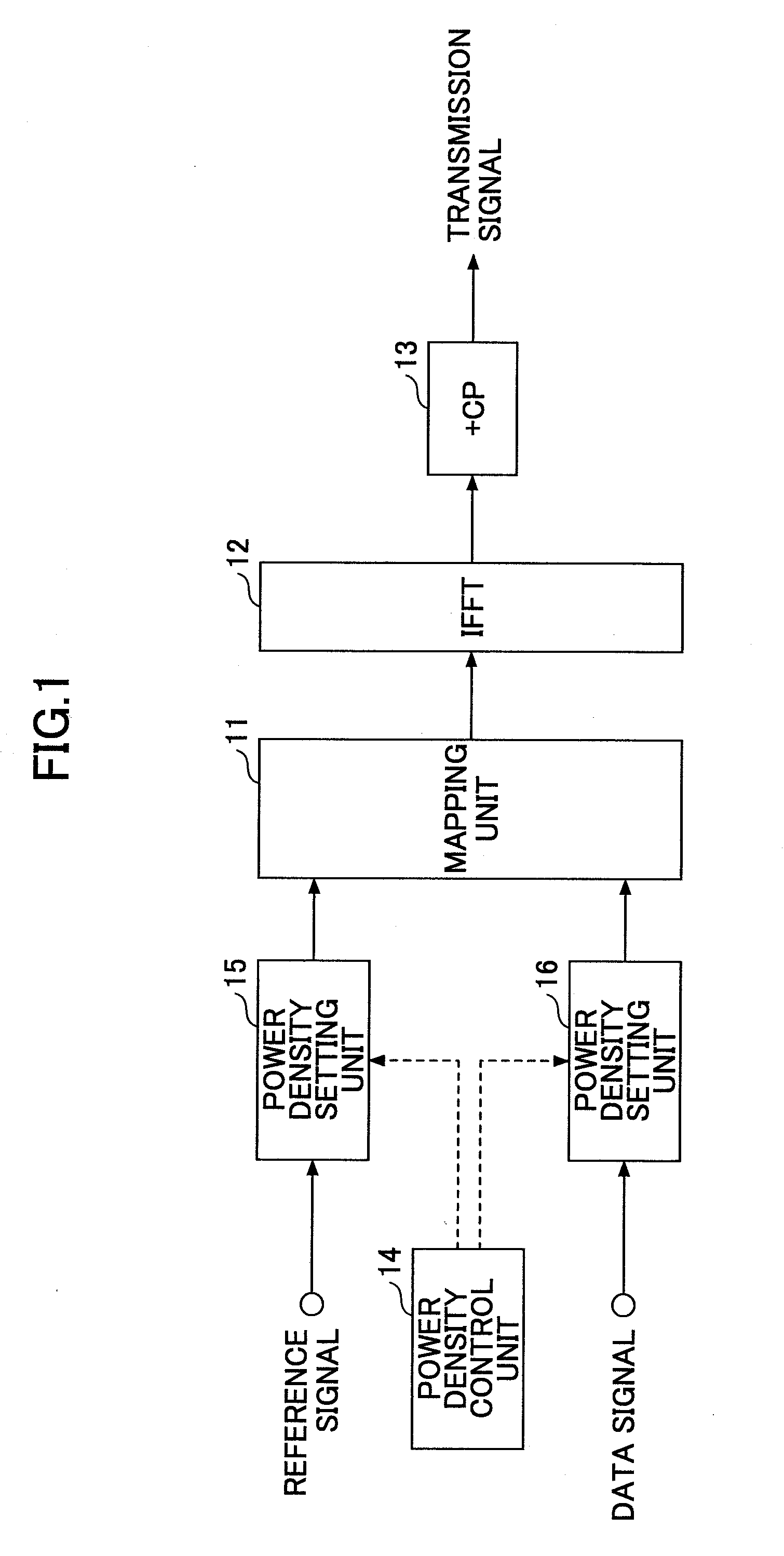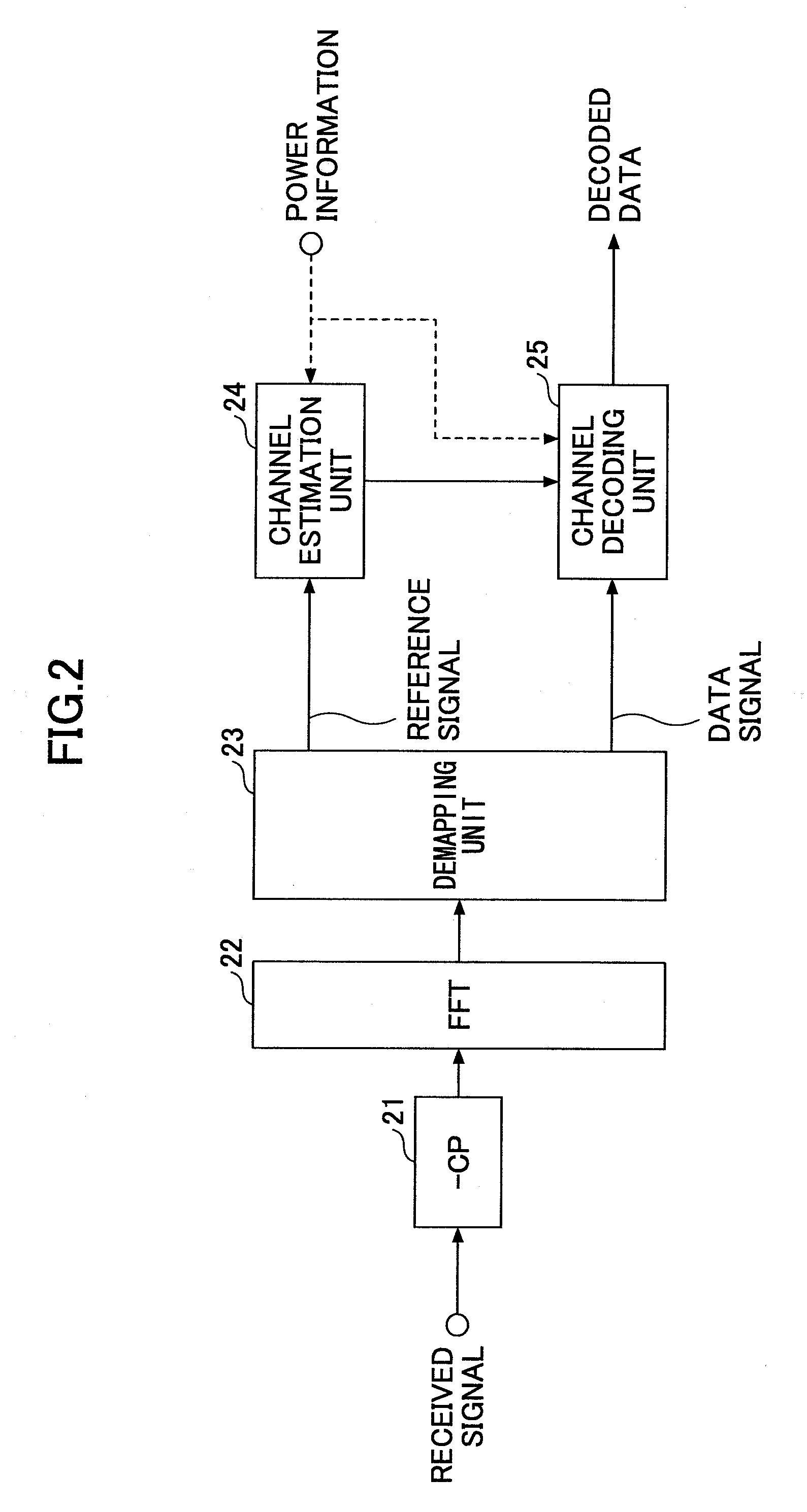Transmitting device, receiving device, and method used in mobile communication system employing OFDM
a mobile communication system and transmitting device technology, applied in multiplex communication, power management, high-level techniques, etc., can solve the problems of reducing the amplification difficult to limit the total power level to or below the maximum allowable transmission power level, and unsatisfactory distortion of transmission signals. the effect of improving the accuracy of channel estimation and the efficiency of transmission power amplifiers
- Summary
- Abstract
- Description
- Claims
- Application Information
AI Technical Summary
Benefits of technology
Problems solved by technology
Method used
Image
Examples
first embodiment
[0027]FIG. 1 is a partial block diagram of an OFDM transmitting device according to an embodiment of the present invention. Typically, the transmitting device is provided in a base station in a mobile communication system employing OFDM for downlink. Alternatively, the transmitting device may be provided in any other apparatus employing OFDM for transmission. As shown in FIG. 1, the transmitting device includes a mapping unit 11, an inverse fast Fourier transform (IFFT) unit 12, a guard interval adding unit (+CP) 13, a power density control unit 14, and power density setting units 15 and 16.
[0028]The mapping unit 11 maps power-density-adjusted reference signals and power-density-adjusted data signals to multiple subcarriers arranged along the frequency axis. Typically, signals such as reference signals and data signals are mapped to subcarriers as in FIG. 1. However, other signals such as control signals may also be mapped to subcarriers.
[0029]The inverse fast Fourier transform (IFF...
second embodiment
[0046]In the first embodiment, signals are mapped to all subcarriers and the power densities of the signals are adjusted such that the total power levels Pall of all time slots are equalized. For this reason, the power density PL of data signals in the time slots t1 and t4 is different from the power density PH of data signals in the time slots t2 and t3 (PLH). Therefore, in the first embodiment, the likelihood (likelihood information) of data signals transmitted with the power density PH is different from the likelihood (likelihood information) of data signals transmitted with the power density PL. Strictly speaking, this in turn makes it necessary to provide different sets of likelihood information for the data signals with the power density PH and the data signals with the power density PL and therefore complicates the decoding process. A second embodiment of the present invention tries to solve or reduce this problem.
[0047]FIG. 4 is a drawing illustrating adjusted power densitie...
PUM
 Login to View More
Login to View More Abstract
Description
Claims
Application Information
 Login to View More
Login to View More - R&D
- Intellectual Property
- Life Sciences
- Materials
- Tech Scout
- Unparalleled Data Quality
- Higher Quality Content
- 60% Fewer Hallucinations
Browse by: Latest US Patents, China's latest patents, Technical Efficacy Thesaurus, Application Domain, Technology Topic, Popular Technical Reports.
© 2025 PatSnap. All rights reserved.Legal|Privacy policy|Modern Slavery Act Transparency Statement|Sitemap|About US| Contact US: help@patsnap.com



